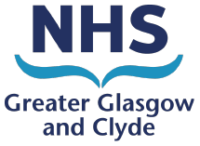Please read the following information and then use the links at the bottom of the page if you are looking for further information or exercise.
Important information to read if you have any concerns about your foot/ ankle pain
Please click below to expand relevant section; these sections outline some of the main issues that we would advise you get checked by a health professional before commencing self-management exercises. These are called Red Flags and may indicate a more serious problem that requires medical assessment.
Symptoms that are present After Trauma
If your symptoms are caused by a recent traumatic incident (e.g. a fall, football tackle) and you have any of the following symptoms:
- Extensive bruising and/ or swelling
- Discolouration e.g. your foot looks pale, blue or red
- Severe pain and very limited movement
- Joint deformity eg foot looks like it is in the wrong place
- New lumps and bumps that appear after the trauma
- Great difficulty putting weight through your leg
- Numbness/ tingling into your foot after trauma
- Feeling of instability
Please Note: If you have a known diagnosis of osteoporosis (low bone density) a small amount of force may cause problems that require medical assessment.
Symptoms where No Trauma was Involved
- Sudden loss of active movement with or without pain
- Redness, heat and swelling of the joint/ surrounding area
- Increasing numbers of joints that are painful and/or stiff
- Fever or generally feeling unwell at same time as your foot pain developed
- Unexplained numbness/ tingling into your foot
- Constant pain which does not change with rest or activity
- Significant worsening pain at night
- Unexplained weight loss and/ or a previous history of cancer
- Unexplained lumps and bumps that appear or are changing/ growing
- Difficulty lifting the front part of your foot/ catching or dragging your foot when walking
Please Note: Special attention should be taken if you have a history of long-term steroid or immunosuppressive drug use, recent joint replacement, recent steroid injection, rheumatoid arthritis or other joint disease, recent infection, Intravenous drug use or alcohol misuse.
Our colleagues in the NHS Greater Glasgow and Clyde Podiatry team have developed a range of information resources for specific foot conditions – see what resources are available.
Foot and Ankle Exercises
Please make sure you have read through the important information about foot pain before proceeding.
Here are some beginner-to-progressive exercises to help you get your foot/ankle moving better. You may need to build these exercises up gradually.
You may be uncomfortable when you start doing these exercises – make sure the level of discomfort feels acceptable to you and that it doesn’t take too long to settle once you are finished.
The exercises should get easier the more consistently you manage to practice them and this may allow you to progress to more difficult exercises.
These are self help exercises:
- Try to enjoy the exercises and work at a pace and level that feels safe.
- Please use a common sense approach when deciding which ones to try.
- The exercises listed are not designed as an alternative to professional advice.
